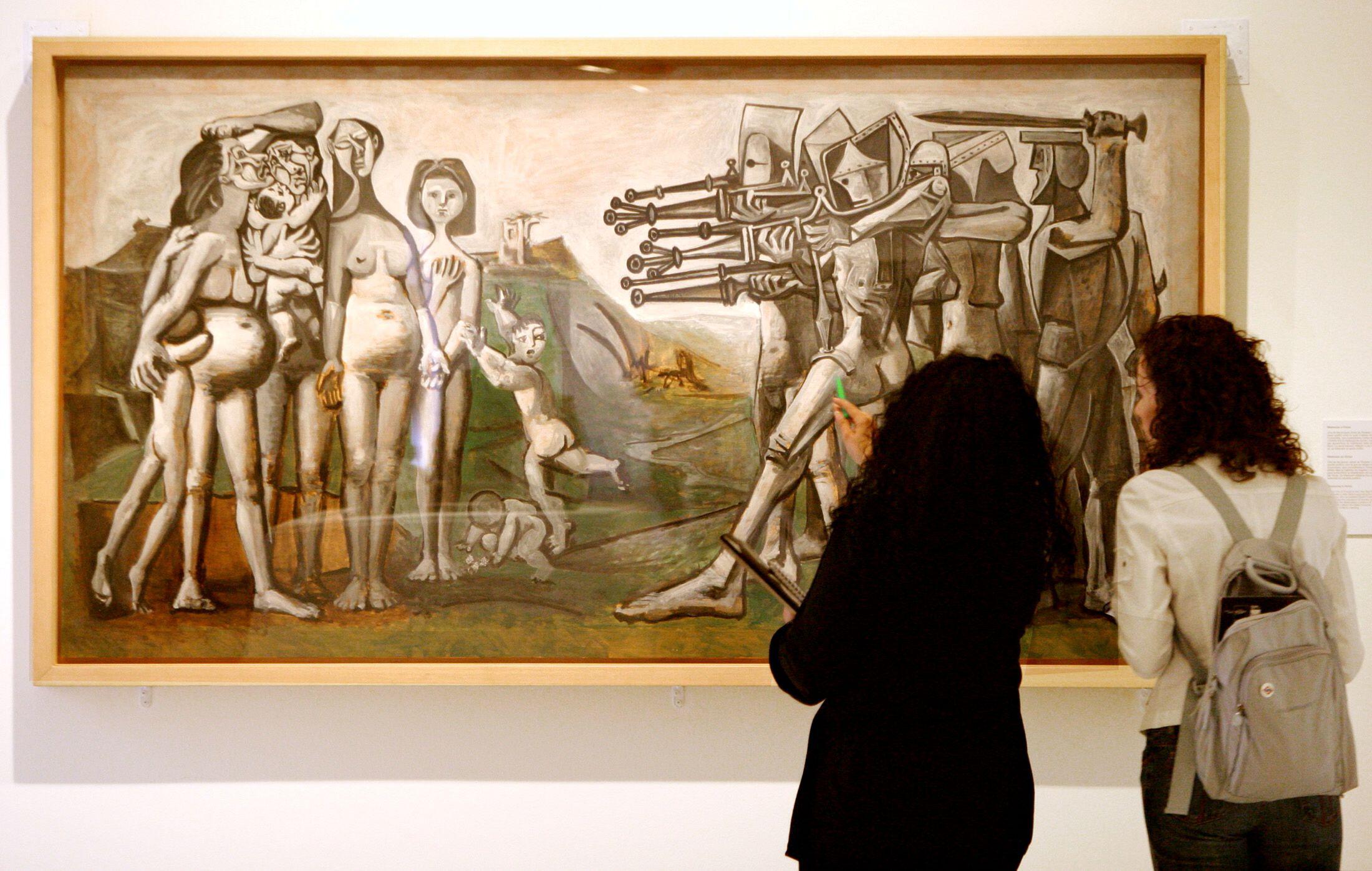More than a half a century later, Pablo Picasso’s anti-war painting is coming home — but it’s not Guernica.
Picasso’s Massacre in Korea, one of a series of anti-war paintings, will be exhibited at the Hangaram Arts Center in Seoul, Vichae Art Museum, the organizer, told Yonhap News Agency.
“While many of us can call to mind the butchered limbs, anguished expressions, and thrashing horse head that trouble the surface of Picasso’s wrenching reflection on the devastating bombardment in April 1937 of the Basque village of Guernica during the Spanish Civil War, naming a single further work by Picasso that is even peripherally concerned with the subject of war might prove tricky for most,” writes the BBC.
The lesser-known work was initially derided by critics as too facile in its narrative. Unlike Guernica, there is little room for interpretation in Massacre in Korea.
In 1951, moved by the American entry in the Korean War and news of the 1950 Sinchon Massacre — purportedly at the hands of American troops — the artist bluntly depicted a group of women and children about to be killed at point-blank range by a faceless firing squad.
“They look as if they are wearing armor from ancient times or from the future — something from a science-fiction novel or from the movies,” curator Isabelle Limousin, told the BCC.
On loan from the Musée Picasso in Paris, Massacre in Korea will be on display in Seoul from May 1 to August 29 during the exhibition, titled “Into the Myth”.
The South Korean National Security Act (NSA) — a controversial anti-communism law — long prevented the avowed communist’s work to be showcased in country.
“Attempts by national and public museums to bring (the painting) to Korea failed several times,” the Vichae Art Museum told Korea.net. “The commemorative painting is stepping on Korean soil for the first time in 70 years since its unveiling, providing a valuable opportunity for us to reflect on our history via Picasso’s work.”





